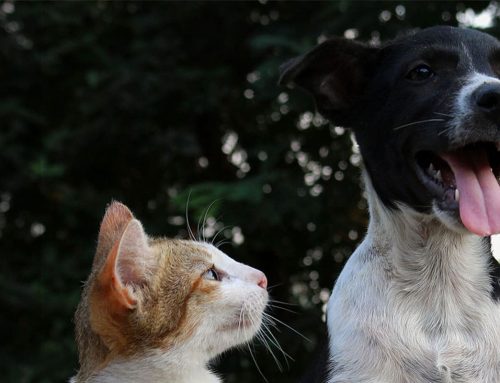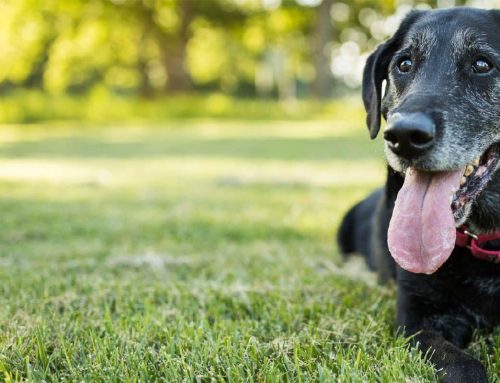Let’s Talk about Osteoarthritis in dogs
Are you noticing that in the past few months you do not find your dog jumping and coming to greet you when you enter the house? One possible reason for it might be attributed to osteoarthritis. It is a constant joint disease which makes your dog’s movement difficult and painful. For dogs, this disease is most common in the middle to senior years, however, younger dogs can be affected also. Research showed that 20% of dogs are likely to get affected by this disease.
It’s hard to see a once happy, active dog become debilitated by this condition. Unfortunately, although there is no complete cure for osteoarthritis, there are things that can be done to make life easier for a dog suffering from the condition.
Early symptoms of Osteoarthritis
- Difficulty in walking, climbing and sitting
- Laziness in getting up and sitting positions
- Lack of energy
- Always preferring to lie down
- Hopping more instead of running
- Loss of appetite and weight loss
- If in cold weather, stiff and slow movement
- Limping
- Swollen joints that are sensitive to touch
- Licking the joint
- Preferring warm and soft places to lie down
- There can be a change in personality, such as your dog liking more isolated places
All too often, people mistake these signs for ageing, so if you do notice any of the above symptoms, visit your vet ASAP.
Causes of Osteoarthritis
There are two main categories
- Normal Joints With Unusual Stress
- Past injury that has caused damage to the joint
- Joints face a wear and tear situation
- Over weight
- Common Stress on Abnormal Joints
- Growth defects that have affected the solidity and figure of a specific joint
- Deprived limb and joint connections
Stress on a joint in any way can be bad and it eventually starts the destruction cycle of wear and tear. As soon as cartilage damage occurs, your pet is in significant pain.
Treatment of Osteoarthritis
There are three main ways to reduce the pain and discomfort caused by osteoarthritis:
Take control of your pet’s weight
Because excess weight is one of the causes of osteoarthritis. When a dog is affected by osteoarthritis at an early age the lack of movement and laziness causes obesity which makes the condition a lot worse. This is why it is important to control your pet’s weight so that the joints have lesser burden. Controlling weight in pets is just like controlling weight in humans. Provide your pet with a healthy, calorie-controlled balanced diet and exercise. Discuss how to achieve this with your vet.
Work out
Is vital because it plays a very important role to strengthen muscles that sustain and hold the joints together. The best way to get an arthritic pet active and mobile is engage them moderate exercise regularly that isn’t too vigorous and doesn’t involve jumping. Your vet can advise on the amount and intensity of exercise that will benefit your pet while taking into consideration the severity of the osteoarthritis.
Anti-Inflammatory Drugs
Are used to fight inflammation and swelling in joints. They also provide pain relief and help your pet to achieve a level of mobility that shields the joints from further deterioration. Non-Steroidal Anti Inflammatory Drugs are the first line of therapy for the treatment of osteoarthritis in canines. The disease cannot be cured, however the treatment can help to prevent further injury and relieve pain. Advanced molecules belonging to the NSAIDs class provide better efficacy in reducing pain and inflammation and help recover mobility with least possible side effects. They do not even induce gastrointestinal disorders such as those associated with older molecules belonging to this class. Consult your vet for further information on use.
There are many other anti inflammatory treatments recommended by vets to help provide pain relief and protect cartilage from further deterioration. These include:
- Pentosan Polysulfate Sodium: An injection which is administered in succession for complete treatment.
- Nutraceuticals containing Glycosaminoglycans (GAGs): These are the essential building components for joints and cartilage. They are available in oral dosage form and can be mixed in your pet’s food. They are used in combination with other NSAID’s.
In addition to all this, the veterinarian may also recommend physical therapy, cold or hot packs, warm water baths, massage or acupuncture to relieve pain. In severe cases surgery is the only option.
What an Osteoarthritic Pet Looks Like
Osteoarthritis is a class of disease that progresses very gradually and might take several years or even a few weeks for symptoms to show. It mainly depends on the pet’s age, the level of physical activity, joints involved and the cause leading to it.
For some pets, pain and throbbing movements can be controlled for a longer period just by following a simple schedule that includes no weight gain, mild to moderate level of exercises and the use of anti inflammatory drugs. On the other hand, pets with chronic osteoarthritis require long term medication.
In all cases, your vet is the right person to diagnose and prescribe treatment, according to the condition of your pet. Your care, love and attention, along with the guidance of your vet enables the osteoarthritic pet to live a happy and healthy life.




